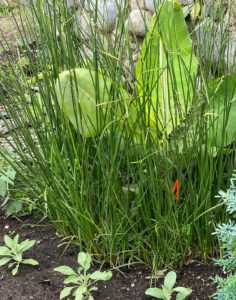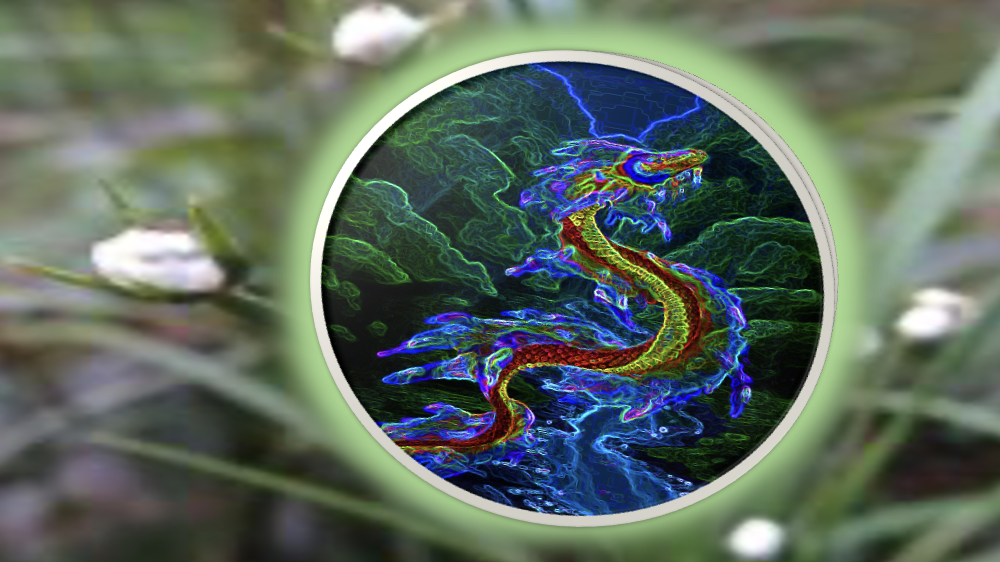
Dunduma, a spiritual plant, is believed to have originated from the heart of Shiu Amarun, the shimmering, multicolored and resonant fertility mother boa of the Earth, related Taita Casimiro Mamallacta Mamallacta, Kichwa traditional elder from the outskirts of the jungle town of Archidona, in Ecuadors upper Amazonian Napo Province.
According to legend, Shiu Amarun was slain by Atacapie, the seven-headed boa of chaos and disintegration, with each head pulling in a different direction. Atacapie symbolizes chaos and confusion, much like the disjointed nature of current governmental institutions. In contrast, Shiu Amarun embodied harmony and fertility, celebrated in many legends for representing the purity and balance of Mother Earth. After Shiu Amarun’s demise, seven plants sprouted from her heart, ensuring that her legacy and energy would endure. You can read the complete myth in my book Rainforest Medicine ~ Preserving Indigenous Science and Biological Diversity in the Upper Amazon, page page 70, “A Kichwa Legend of the Creation of the First Ingandu (Ayahuasca Vine).”
These seven plants are:
- Ayahuasca (Banisteriposis caapi)
- Amiruka Panga (Psychotria viridis)
- Dunduma (Cyperus sp.)
- Uchu (a variety of red hot chili pepper ~ Capsicum sp.)
- Iru (a variety of sugarcane ~ Saccharum sp.)
- Paju Jinjibri (a small spicy variety of ginger ~ Zinziber sp.)
- Palanda (a small variety of banana ~ Musa paradisiaca var.)

Dunduma holds profound significance in the Amazonian tradition, with many of its uses passed down through generations of elders. The plant is magical and revered among the natives of the upper Amazon. Its Kichwa name originates from the Upper Napo Province, particularly around the town of Archidona. The Siekopai call it “Yiyó, Nuní,” meaning “Celestial tuber of beads.” In their cosmology, the bead represents the union of opposites, with its empty hole symbolizing the truth that matter is made effective by spirit. Here are some of its commonly known uses:
- Protective Spray: The root is mashed into floral water, cologne, or cane moonshine to create a protective spray. This spray is applied to individuals when they feel dizzy, experience blood pressure issues, or need protection during travel or hunting. It is also used for good luck in meetings and to revive someone who has fainted.
- Clarity Ritual: The roots can be grated and soaked in hot water, which is then cooled and strained. This water is consumed like Kava during dawn rituals, helping participants discuss dreams, plan for the day, share legends, and address life issues. Dunduma is believed to grant clarity and lucidity, helping one understand problems and find solutions.
- Healing Tonic: Dunduma soothes upset stomachs, colic, menstrual cramps, dizziness, anxiety, and general unease. It is safe for children, with a small dose for babies and a half-cup for older kids.
- Enhanced Potency: The water’s potency is enhanced through chanting, praying, singing, or leaving it out under moonlight. Elders with knowledge of specific invocations can further amplify its qualities.
- Pain Relief: Dunduma is also used to relieve body pain, particularly muscle aches and cramps. The water or essential oil can be applied to painful areas, and it is beneficial for heart pain when prayed over and consumed. A balm can be made by mixing the extract with lard or fat for massaging stiff or aching body parts.
- Support for Children: Dunduma is believed to help children overcome laziness caused by anemia and purify the blood, strengthening the heart.
- Antiparasitic: Regular consumption of Dunduma helps rid the body of parasites due to its anti-parasitic properties.

The name “Nuní” refers to a collection of celestial plants in the genus Cyperus, all with aromatic tubers, which are ancestrally cultivated heirlooms believed to contain the holy spirit of divine immortals.
In Colombia, some groups refer to Dunduma as “Trueno Chunduru,” the sacred seed of lightning and thunder, emphasizing its awakening properties. Like thunder clears stagnation and brings freshness, Dunduma cleanses one’s aura and energetic space, restoring clarity.
Wati Nuni: A Sacred Plant of Spiritual Protection and Healing

Description and Symbiotic Nature
Wati Nuni, a Cyperus species and a variety of Dunduma, is distinguished by its thin, tube-like stalks with a spurts of lanceolate leaves protruding out from the tip of its stalks. This plant forms a symbiotic relationship with native fungal species, which appear as white balls of fungus at the center of the leaf cluster. These fungus balls were traditionally used by shamans in spiritual healing practices.
Spiritual Significance
Wati Nuni is revered for its mystical properties, known for its ability to unite all the chakras and align one’s spiritual essence. This sacred plant is believed to protect the home and ward off evil spirits. Its water, made from chopped roots soaked in water, is similarly effective in repelling negative energies and for a wide array of ailments, anxieties and distrubances. Being a gift from celestial beings, its purpose is to upgrade harmony and protection.
Cultural Legacy and Meaning
The name “Wati Nuni” translates as “Wati” (spirits of all kinds) and “Nuni” (sacred heavenly seed). These plants are considered gifts from divine immortals, brought back by spiritual masters during visions. Wati Nuni is part of the legacy left by yagé drinkers, who passed down these sacred plants to aid ordinary people in their spiritual cultivation, protection, and overall well-being. This is so being that inside the very tissues of his plant is enshrined the holy spirit of the divine immortals.
Ceremonial Use
Wati Nuni, along with Dunduma, plays a significant role in ceremonial settings, particularly after consuming ayahuasca. It is used to wash the mouth, a practice believed to calm and protect the participant. The water in which the seeds are soaked can also be splashed around the ceremonial area using a ti leaf sprout, protecting the space from malicious spirits. This aromatic water is used as a protective spray, and when blown on the temples or vrown its calms, and opens sacred space for meditation and communoin wiht the always new and fresh divine immortals. Cultivating Wati Nuni is regarded as a spiritual resource and a blessing, with the plant opening pathways for blessings to unfold based on the sincerity and virtue of those who grow and use it.
Preparation and Rituals
To prepare Wati Nuni for use, the roots are sliced into small pieces, soaked in water, and prayed over. Although the plant has inherent power, its potency can be significantly enhanced through intentional rituals such as leaving the water under moonlight, chanting, and praying. Specific prayers must be directed for the plant to perform its intended work, whether for protection, healing, or aiding someone in need. Wati Nuni is also used to treat spirit possession, help children with autism, and ease anxiety and fear.
Benefits for Children
Wati Nuni is believed to instill natural discernment between right and wrong in children, especially before they go to school. This quality helps them resist bad influences. The water is given to babies if they are frigtened or uneasy and is like chammonile, soothing and calming.
Boundary Protection
Water infused with the chopped tubers of both Dunduma and Wati Nuni can be applied to boundary lines during disputes, serving as a protective barrier against intrusion. However, this remedy should only be used in legitimate cases of boundary disputes, invoking the plants’ protective qualities to restore harmony.
Cultivation
The Siekopai people cultivate this plant near their homes in full sunlight, using soil mixed with ashes from the fire. When the leaves dry up, the tubers are harvested, cut from the roots, and placed in water to sprout before being replanted.
Conclusion
Both Wati Nuni and Dunduma are versatile plants, capable of thriving in various climates but requiring full sun exposure. Excessive vegetation can lead to their demise, and over time, many culturally significant varieties have been lost. For example, there were once varieties used in rituals to make the deceased visible to divine immortals, guiding their souls to the celestial realms.
One fascinating aspect of Wati Nuni is its vast genetic diversity. When planted together, it can grow into small, medium, and large varieties, each serving unique purposes. The dwarf variety is known for breaking spells, the medium-sized variety is used to resolve social issues, and the tall variety helps those who feel disintegrated by aligning all aspects of their being.
These sacred plants serve as agents of the co-evolution of heaven and earth, opening celestial pathways for those who tend to them with sincerity and spiritual discipline.
You can meet first hand these plants at the Ethnobotanical Gardens at Ocean Forest Ecolodge.


